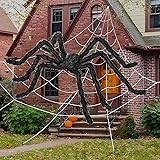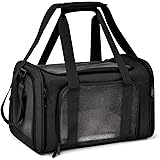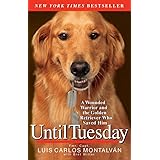As the video above comprehensively details, the journey of raising a well-behaved canine companion begins long before you even bring your puppy home. Astonishingly, a puppy’s brain reaches its full developmental capacity by just seven weeks of age, signifying their readiness to absorb and learn from the moment they join your family. This critical period underscores the immense value of a structured puppy training schedule by age, providing a clear roadmap for nurturing a confident, happy, and responsive dog. This article expands upon the McCann Dogs methodology shared in the video, offering deeper insights and actionable strategies to ensure your puppy receives the best possible start in life.
The Critical Window: 8-Week Puppy Training Foundations
Bringing an 8-week-old puppy home marks the beginning of an intensive relationship-building phase. During this period, the focus is less on formal command execution and more on leveraging natural interactions to establish a strong, positive rapport. This early stage of puppy training is foundational, setting the stage for all future learning.
Building the Bond: Leveraging Natural Opportunities
One of the most potent tools at your disposal for early bonding and positive association is food. Puppies inherently value sustenance, and by becoming the consistent source of this resource, you elevate your status in their eyes. Hand-feeding, as demonstrated in the video, transforms mealtime into a potent training session. Furthermore, incorporating their name into these interactions—saying their name, then immediately rewarding with food—is a classic example of classical conditioning. This process creates a robust neural connection: the sound of their name predicts something positive. Similarly, establishing a verbal marker like “yes” followed by a reward, known as a conditioned reinforcer, acts as a precise communication tool, signifying “that’s exactly what I want you to do!” This immediate feedback loop is crucial for effective learning, especially given that canines process information rapidly.
Essential Management Tools for Early Success
Effective management is paramount for an 8-week-old puppy, who is constantly learning whether you are actively teaching or not. Proactive environmental control prevents the development of undesirable behaviors, which are significantly harder to “untrain.”
- House Line: A lightweight line attached to your puppy’s collar provides gentle, non-aversive control. It acts as an extension of your arm, enabling you to redirect your puppy from potential hazards or prevent unwanted exploration without physically chasing them. This silent guidance fosters independence within safe boundaries, crucial for early puppy management.
- Crate Training: Beyond simply being a containment device, a crate, when introduced correctly, becomes a secure den for your puppy. It’s an indispensable tool for house training, managing unsupervised time, and establishing a consistent routine. The objective is to create a positive association, making the crate a place of comfort and security, not punishment. Initial training should involve short, positive sessions with treats and toys.
- Potty Training: This requires unwavering vigilance and proactive intervention. An 8-week-old puppy lacks full bladder and bowel control. Therefore, frequent trips outside are essential: immediately upon waking, after eating, after playing, and before crating. Consistent rewarding of outdoor elimination builds a strong association between going outside and positive reinforcement. Any indoor accidents should be cleaned without fanfare, and the area thoroughly deodorized to prevent recurrence.
Navigating the First Nights: Crate Placement and Comfort
The first few nights in a new home can be disorienting for a puppy. Elevating the crate to eye level beside your bed or in a nearby sleep area offers both comfort and practical advantages. The visual presence of their new human family provides a sense of security, mimicking the closeness they would have experienced with their littermates. Moreover, being within earshot allows you to quickly discern and respond to their signals when they need to go out, minimizing accidents and fostering trust. This strategic placement helps solidify the crate as a safe, peaceful space.
Introduction to Luring: Shaping Desired Behaviors
Luring is a powerful, non-confrontational method for guiding your puppy into desired positions. By using a treat to physically direct their nose and body, you can teach them to follow the food, which is the precursor to formal commands. This technique builds intrinsic motivation for cooperation, as the puppy quickly learns that following your hand leads to a reward. These initial luring exercises, even simple movements like encouraging them to spin or weave through your legs, are vital foundational skills that prepare them for more complex dog commands in subsequent weeks.
Advancing Skills: 9-Week Puppy Training Progressions
As your puppy enters their second week home, usually around 9 weeks of age, a noticeable increase in confidence and exploratory drive often emerges. This stage necessitates an adjustment in your puppy training schedule to accommodate their growing independence while reinforcing previously learned behaviors.
Enhanced Supervision for the Confident Explorer
With increased confidence comes a greater propensity for mischief. Your 9-week-old puppy will be more active, exploring every nook and cranny of their new environment. Consequently, vigilant supervision becomes even more critical. The house line, initially a tool for gentle redirection, now serves as a crucial preventative measure, averting potential problems before they escalate. It is demonstrably easier to prevent an unwanted behavior from solidifying than to attempt to correct it later. Maintaining an “eagle eye” during periods of freedom ensures that your puppy consistently receives positive reinforcement for appropriate choices, thus shaping desired conduct within your home.
Elevating Foundational Exercises
Continue to practice and increase the challenge of the exercises introduced during the 8-week period. Sustained hand-feeding and consistent “name then reward” repetitions are essential to embed these behaviors deeply. It is important to be mindful of how often you use your puppy’s name; if it is frequently uttered without a subsequent reward, its value can diminish. Furthermore, at 9 weeks, involving other family members in these simple, rewarding exercises reinforces the puppy’s responsiveness to multiple individuals, crucial for their development of robust socialization skills and generalizing their training.
The Importance of Collar Handling
Familiarizing your puppy with collar handling is a fundamental step that often goes underestimated. Integrate gentle collar touches into your daily interactions, always pairing them with a positive reward. For instance, reach for their collar, offer a treat, then release. This conditioning creates a positive association with being held by the collar, which is invaluable for future situations such as vet visits, grooming, or simply guiding them safely. By consistently making collar handling a rewarding experience, you can proactively prevent the development of “hand-shy” behavior, where puppies recoil from human touch, fostering a confident and cooperative demeanor.
Mastering Obedience: 10-16 Week Puppy Training Milestones
Between 10 and 16 weeks, your puppy is poised to absorb more structured learning. The focus shifts towards building reliable responses to formal commands and expanding their comfort with physical handling. This period is pivotal for establishing solid obedience training foundations.
Introducing Core Commands: Sit, Down, and Stand
At 10 weeks, puppies are ready for formal command introduction. The McCann method’s formula—”Command, Stimulus, Reward”—is an efficacious approach for teaching new skills like “sit,” “down,” and “stand.”
- Command (Verbal Cue): Say the command clearly and distinctly. For example, “Sit.”
- Stimulus (Lure): Immediately follow the command with a food lure, guiding your puppy into the desired position. Crucially, the lure should be a deliberate hand motion that consistently leads the puppy into the correct posture.
- Reward: The moment your puppy achieves the position, mark it with “yes” and provide the treat.
This process is rooted in operant conditioning, where a behavior is strengthened by its consequences. Progressions are gradual:
- Week 1: Consistent use of food lure.
- Week 2: Transition to an empty-handed lure (the same hand motion, but no food in hand). The “yes” marker allows time to reach for the treat.
- Week 3: Begin to test with a smaller or no lure. Reward enthusiastically (jackpot reward) for spontaneous or quick responses. If the puppy struggles, revert to the previous step or reduce environmental distractions.
Consistency, precise timing of the marker, and patience are paramount during this stage of foundational skills development.
Cultivating Calmness: Comprehensive Handling Exercises
Handling exercises are critical for your puppy’s comfort with routine care and veterinary examinations. The video demonstrates an excellent structured approach:
- “On Your Side” Position: Lure your puppy into a relaxed down position, then gently guide them onto their side by moving their head towards their shoulder. Reward calmness in this position. This ensures a relaxed starting point for further handling.
- Systematic Body Part Handling: Once the puppy is comfortable on their side, systematically touch different body parts—paws, ears, tail, mouth—marking with “yes” and rewarding while you are still touching the body part. This timing is crucial; the reward must be concurrent with the touch to build a strong positive association. For instance, holding a paw, saying “yes,” then delivering a treat.
- Sitting Handling: For areas like eyes, ears, and teeth, a seated position is often more practical. Brace your puppy’s chin and collar, then calmly pat and praise as you inspect their features. Gradually introduce looking inside ears or lifting lips, always rewarding cooperation.
The principle here is to create positive emotional responses to touch, ensuring that future necessary interventions (like nail trims or medication administration) are met with compliance rather than fear or resistance. This proactive approach significantly reduces stress for both dog and owner, reflecting the understanding that dogs “learn within one second” when it comes to precise timing of reinforcement.
Achieving Reliable Name Recognition Amidst Distraction
While your puppy may respond to their name in a quiet environment, the true test of reliability comes with distractions. Between 10 and 16 weeks, your puppy training schedule should incorporate “proofing” their name response in increasingly stimulating settings. Begin in a moderately distracting environment, call their name, and immediately lure them towards you, rewarding generously when they respond. Gradually introduce more motion, exciting vocal tones, and even external distractions (e.g., a dropped toy, another person) while continuing to use a lure initially. The goal is for your puppy to consistently choose to re-engage with you despite competing stimuli. High-value treats (like chicken or cheese) can significantly enhance motivation. If your puppy hesitates, a gentle “touch” on their side can reorient their attention, guiding them back to you and ensuring success. This process ensures their name becomes a powerful recall cue, regardless of the environment.
Addressing Puppy Nipping and Biting
Many puppies exhibit nipping and biting during this stage, a natural but often challenging behavior. While beyond the immediate scope of this detailed age progression, understanding that this is a developmental phase is important. Strategies such as redirecting to appropriate chew toys, teaching bite inhibition, and ensuring adequate rest are key. If severe, dedicated resources on managing puppy nipping should be consulted, as the video alludes to a specific playlist on this topic.
Beyond 16 Weeks: The Path to Advanced Obedience
By 16 weeks, with a solid foundation established through the aforementioned puppy training practices, your canine companion is well-prepared for more advanced obedience training. This includes sophisticated skills such as walking politely on a loose leash, mastering a reliable “come” command from a distance, and introducing the “stay” command with increasing durations and distractions. The bedrock of positive reinforcement, consistent practice, and effective communication laid during these crucial early weeks will serve as the springboard for a lifetime of enjoyable and cooperative partnership. Embrace every moment of the ongoing training journey, knowing that the efforts invested now yield profound dividends in the future.









